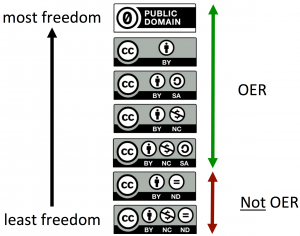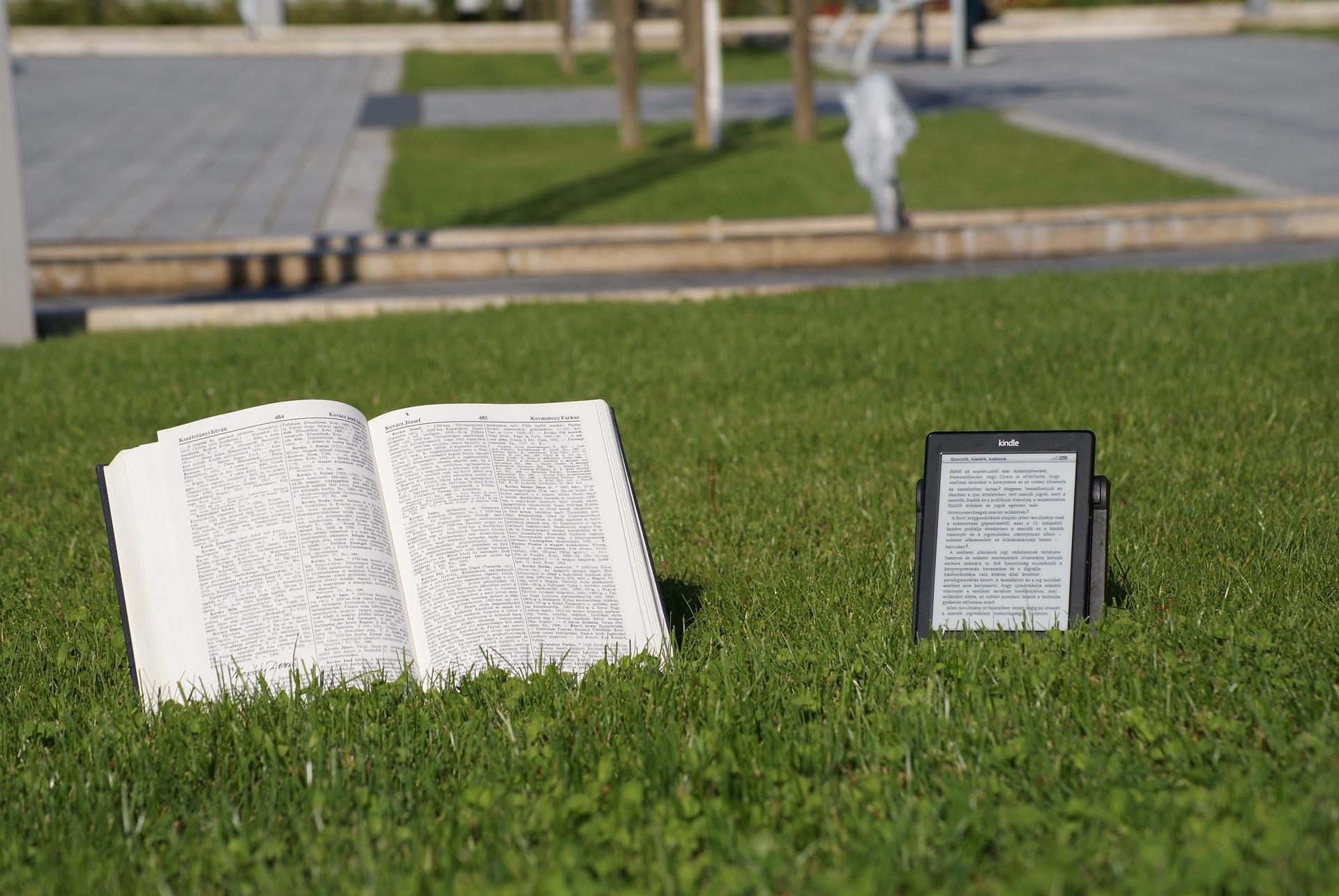Large parts of this course are about creation, both how it works from a legal perspective and more practically, how we learn by making and creating something. In this unit we will explore and practice how to create OER so they can have biggest impact and be used without any legal or technical barriers.
Big Question / Why It Matters
A big part of any educator’s work is preparing, updating, and combining learning materials. Making those materials open requires just a few additional steps, and it’s easier than you think. What are those steps? What should you consider and expect when you want to create and publish your resources in the open?
When we share our education resources as OER, we share our best practices, our expertise, our challenges and solutions. Education is about sharing. When we share our work with more people – we become better educators.
Learning Outcomes
- Imagine how your OER will work in practice.
- Understand how to select a CC license(s) for your resources.
- Examine your open license decision for compatibility (i.e., can it be remixed) with other OER.
- Identify needs and challenges to improving OER accessibility for everyone.
Personal Reflection / Why it Matters To You
What kind of learning resources do you create now? Do you publish or share these resources with other people for feedback? Which of your resources do you think could benefit fellow educators, learners, libraries or scientists? If you choose to share, how much freedom do you want to give to others; what permissions will you allow for others to reuse your work?
Acquiring Essential Knowledge
Acquiring Essential Knowledge
Why share?
For an introduction on why it is important to share your work as OER, watch this video:
Open Education Matters: Why is it important to share content? (time 03:51)
Because educators and librarians can share OER with everyone for near zero cost[1], we should. After all, education is fundamentally about sharing knowledge and ideas. Libraries are about archiving, sharing and helping learners find the knowledge they seek. When we CC license our work, we are sharing that work with the public under simple, legal permissions. Sharing your work is a gift to the world.
Choosing a CC license for OER
As you may remember, not all education materials available under a CC license are OER. Review this chart that details which CC licenses work well for education resources and which do not.

The two CC NoDerivatives (ND) licenses are not OER-compatible licenses because they do not allow the public to revise or remix the education resource. Because the ND licenses do not meet the 5Rs or any of the major OER definitions, the open education movement does not consider ND-licensed education resources “OER.”
Choosing the right license for your OER requires you to think about which permissions you want to give to other users – and which permissions you want to retain for yourself. Read the “Open Textbook Community Advocates CC BY License for Open Textbooks” and think about why they recommend the Creative Commons Attribution License (CC BY) for education. You can find similar text with more arguments made about this same license for publishing scientific research in “Why CC BY?” from Open Access Scholarly Publishers Association.
For basic information about the licenses, how to choose and apply one to your work or combined works from other people and sources, revisit Section 4.1
CC license legal cases in open education
For a detailed analysis of Creative Commons case law, see Section 3.4 “License Enforceability.” Creative Commons maintains a listing of court decisions and case law from jurisdictions around the world on its wiki.
In 2017-2018 there were two legal cases concerning open education: Great Minds vs. FedEx Office and Great Minds vs. Office Depot. Both cases involved OER used by schools for non commercial purposes. Different school districts asked FedEx and/or Office Depot to print the OER materials for use in their classrooms. The OER in question were created by Great Minds using public funds and licensed by Great Minds under CC BY-NC-SA 4.0. Great Minds claimed that the school districts were not allowed to engage FedEx to reproduce the materials, and that because FedEx made profit while producing the requested copies, they were violating the license. Importantly, Great Minds never alleged that the school districts’ use of the reproduced materials violated the non commercial restriction of the license. The central question in the case was whether a licensee – a school district – that is properly using the work for non commercial purposes may outsource the reproduction of the works to another who makes a profit doing so.
At the time of publication, in the FedEx case the U.S. Court of Appeals for the 2nd Circuit ruled that a commercial copyshop may reproduce educational materials at the request of a school district that is using them under a CC BY-NC-SA license. The Office Depot case is still pending appeal.
Other considerations
Other than choosing the right CC license, what other aspects of openness and pedagogy are worth considering? Here is a list of best practices to include in your work when building OER
The Open Washington Module 8 on “Sharing OER” will give you practical advice on how to share OER online and prepare them to be used offline as well.

Encyclopedia and e-book reader on green grass by papirontul. Dedicated to the public domain using CC0
Ensuring OER is Accessible to Everyone
At its core, OER is about making sure everyone has access. Not just rich people, not just people who can see or hear, not just people who can read English – everyone.
As authors and institutions build and share OER, best practices in accessibility need to be part of the instructional and technical design from the start. Educators have legal and ethical responsibilities to ensure our learning resources are fully accessible to all learners, including those with disabilities.
Watch “Simply Said: Understanding Accessibility in Digital Learning Materials” by the National Center on Accessible Educational Materials (6:42)
“Simply Said: Understanding Accessibility in Digital Learning Materials” by National Center on Accessible Educational Materials, CC BY 3.0.
Best practices to ensure your OER is accessible to all include:
- putting your work into the public domain (CC0) or adding a non-ND CC license to your work,
- make it simple to download your work in editable file formats, so others can modify and/or translate it to meet local needs and make it accessible, and
- most important – design your work to be accessible from the start.
Final remarks
Openness in education means more than just access or legal certainty over what you are able to use, modify, and share with your learners. Open education means designing content and practices that ensure everyone can actively participate and contribute to the sum of all human knowledge. As educators and learners revise others’ OER and create and share new OER, accessibility should always be on your design checklist.
- While in many other countries (like in many EU member states), cost may not be a problem, restrictive copyright and narrow fair use / fair dealing rights can limit new teaching methods. ↵
